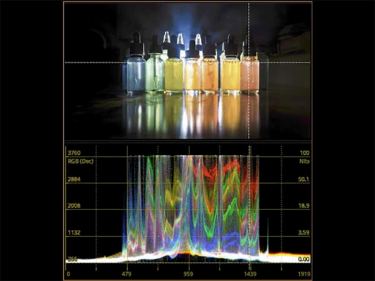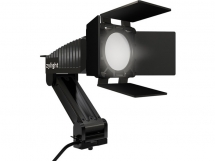| Українська | English | |||||||||||
|
|||||||||||
| News | About company | Service-centre | OB Van/SNG Rental | NextGen Energy Solutions | Contact us |
|
|
Engineering Service, Inc.
» News News PHABRIX has announced the availability of the latest update, V4.8, for its acclaimed Qx and QxL rasterizers. The new release utilizes a technique patented by PHABRIX to efficiently deliver a high-resolution image processing pipeline with support for deep color sources up to 12-bits.
With V4.8, users can access a choice of Overlay, Stacked and Parade display modes, each provided with the option of multi-colored, highlighted, green or monochrome traces. The flexibility to display YCbCR, RGB, YRGB, YGRB and individual components is retained along with connected instrument cursor linked to Picture and Data View, and user markers linked to Vectorscope. For detailed inspection, Single Line Mode and H and V magnification are also available. Luminance Nits scales and operation user-controlled Nits markers are provided for SDR, HLG, PQ, S-Log3 and SR-live HDR formats, and Rec 709 and Rec 2020 colorimetry is supported over the wide-range of YCbCr:422, RGB:444, SDI, 2110, SD*/HD/2K/UHD/4K/EUHD formats for which PHABRIX is renowned. The Qx Series of rasterizers is available in two platforms, the Qx and QxL, both with a common look and feel, providing an accessible user interface and intuitive toolsets for full operational flexibility and easy migration from an SDI to an IP centric operation. The flexible architecture offers in-field license upgrades for SDI-UHD/4K, 2110-UHD/4K 48-60p RGB (EUHD), PCAP, HDR, AV test signal generation as well as engineering grade data view and ANC packet inspection tools. A factory fitted hardware option provides RTE™ realtime SDI eye and jitter analysis with the further option of a highly advanced SDI-STRESS toolset. Phillip Adams, CEO of PHABRIX, comments: "We are delighted to be able to add powerful new Waveform Monitoring capabilities to our Qx and QxL rasterizers, and imminently to our new QxP portable waveform monitor. With an increasing number of our customers now working in both SDR and HDR, the need to be able to view all the precise detail required for camera shading, image grading and critical QC has become even more acute. Thanks to the latest update, they will now have easy access to the highly accurate reproduction of image fine detail whilst working across a full range of environments and formats." « To the list of news |
|
|||||||||||||||||
 |
+38 (044) 593-18-20 +38 (073) 593-18-20 +38 (096) 532-96-82 +38 (095) 532-96-82 Service center Telegram @Engineer_Service |

|
|
|||||
 |
e-mail: engineer-service.tv 15 Vavylovykh str., Kiev, 04060, Ukraine Authorized service centre of Panasonic, Sony, JVC, Fujinon, Canon |
|||||||








